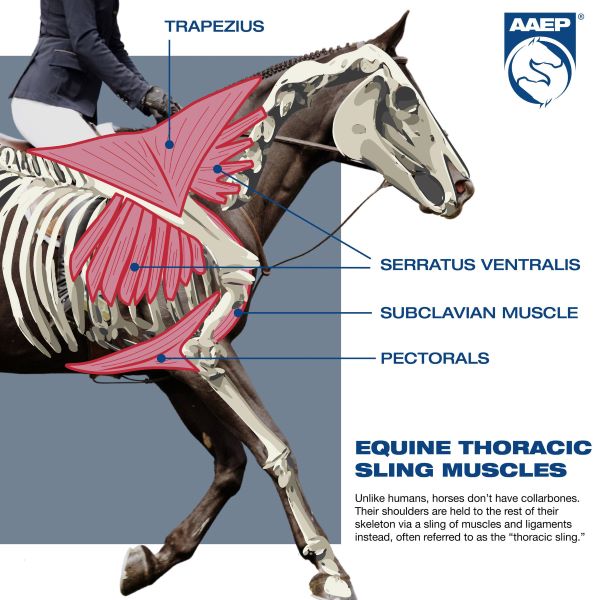The Thoracic Sling
By the AAEP Horse Owner Education Committee:
Unlike humans, horses don’t have collarbones. Their shoulders are held to the rest of their skeleton via a sling of muscles and ligaments instead, often referred to as the “thoracic sling.”
Why is this important?
We often ask our equine athletes to perform complex movements that require tremendous strength and coordination, and horses carry the majority of their weight in their front end. Therefore, it is imperative that the bulk of the muscles that support the front end are kept healthy and conditioned, and the horse is trained to use their “motor” — that is, engaging the large hind end muscles as much as possible to avoid excessive weight bearing on the front end.
If the front end of the horse is consistently overweighted or not at an appropriate level of fitness, repetitive biomechanical stresses get transferred down the leg to the smaller ligaments and tendons that were not designed to bear this weight, which can then lead to injury.
If you want to learn more and see photos (warning – graphic) of the musculature, view this comprehensive article from the American Farriers Journal:
What is the Horse’s Thoracic Sling? (americanfarriers.com)











